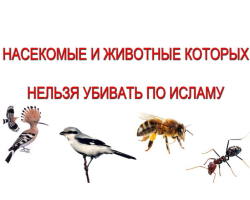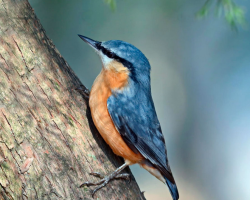In our article you will find a lot of interesting information about the types of snakes existing in our nature. Also, for clarity, we picked up a photo for you so that you can easily distinguish which representative of the fauna you meet - poisonous or not.
Content
- Types of poisonous snakes - name, description, photo
- Types of non -navigable snakes - name, description, photo
- Types of black snakes - name, description, photo
- Types of bright snakes - name, description, photo
- Types of snakes for home content - name, description, photo
- Types of sea snakes - name, description, photo
- Types of tropical snakes - name, description, photo
- Rare types of snakes - name, description, photo
- Video: 13 RaP -Rise Snakes in the World
Types of poisonous snakes - name, description, photo
Types of poisonous snakes - name, description, photo:

- Gamadriand (Royal Cobra) - A snake, the size of which reaches 6 meters, which distinguishes it among other representatives of the cobra family. This reptile usually does not hunt rodents, birds and frogs, other snakes are the main source of food. Perhaps because of this she was nicknamed the Royal.
- This snake belongs to the family of aspids. A peculiar cobra with a feature of cobra can be called a kind of hood that it uses in case of danger. The color of her scales depends on the habitat, but this applies to scales on the back, and the one in the belly area usually has light beige color.
- You can meet such a snake in the tropical forests of Southeast and South Asia. Representatives of the species have a fairly constant habitat, although you can sometimes notice how some individuals migrate tens of kilometers. In recent years, snakes began to settle too close to people. This is due to the cutting of forests and the active development of agricultural production.

- Taipan - The snake, like the previous one, belongs to the family of aspids. It is considered one of the most poisonous among all modern snakes, those who live on land. Its poison is extremely poisonous to save the victim, you need a special antidote, but not everyone manages to help. Without this medicine for 90% of all cases, the result will be lethal.
- The size of this reptile reaches 2 meters, although in nature a representative of this species is 2.9 meters long. And according to some people, they saw Typanov, whose size exceeded this indicator. Usually these snakes have a uniform color of scales, it varies from brown to black. All belly has a light color, like most snakes.
- The habitat of this reptile is the territory of Australia. Most often they are found in the northern regions and the central part of the mainland. The favorite areas of these reptiles are dry plains and deserts. Here snakes are hidden in the natural faults of the soil and under the stones, which makes their detection a rather complicated task.

- Black Mamba - The most dangerous snake in Africa. A distinctive feature of this reptile is a snake smile. Due to the features of the structure of the skull, the cut of the mouth in a closed position resembles a smile. Also, people sometimes take the name of this snake into a stupor, because it is not black at all. It got such a name because of the color of the mouth, it is completely black.
- The size of this snake is approximately 4 meters. Science believes that in conditions of wild nature, they can reach more impressive sizes of about 4.5 meters. She lacks very little to get closer to the royal kobra in size, but the mamba has more fangs. The color of the scales changes throughout life. At first it is silver or olive, and the older the snake itself, the darker its scales. But he never becomes completely black.
- This creature lives in the open spaces of Africa, or rather in the eastern, southern and central part of the continent. Most often, you can meet it in rocky areas, savans and river valleys with dry trees. They use shrubs and trees, like personal roles to warm up in the sun. Sometimes these snakes crawl into old termitects or into the voids in the trees.

- Kassava (Gabon viper) - A poisonous snake from the kind of African viper. It is considered one of the largest representatives of a kind. This snake reacts very lazily to external stimuli, so science considers it a rather calm reptile. For the same reason, an attack on a person is isolated cases.
- The length of an adult is somewhere up to 1 meter, but in the wild you can find more representatives and more. In the last century, it was possible to catch an individual whose length was 1.8 meters. Outwardly, these snakes stand out by their “headdress”. There are several scales similar to spikes near the nostrils, but they are simply called peculiar horns. The color of the scales is perfect for this quite dangerous hunter. Its color completely merges with foliage against the background of the soil. This coloring can be described as follows: the snake has a white or light color, on which different geometric figures of dark colors are placed.
- This reptile lives on the territory of East, Western and Central Africa. She loves rather wet areas, so most often she can be found in tropical forests. It is also found in the edges of the shroud, and often on plantations.

- Rattlesnake -This is soon a whole genus of snakes, which consists somewhere out of 36 varieties. Usually we call rombic rates of explosive snakes. After all, they are considered the most expressive and classic representatives of a kind.
- The dimensions of these reptiles vary greatly from 0.5 to 3.5 meters. Speaking about the coloring, it is also very different from one individual to another, but a more distinguishing feature can be called that they are very rarely monophonic. There are often different patterns on their bodies, most often in the form of rings, and often the color itself is quite poisonous in color, which is atypical for predators.
- Science believes that these snakes have two large habitats-Southeast Asia and the American continent. But there is a slight exception to this rule. There is a snake, the name of which is a shield that is found in different parts of the globe.

- Gyurza - One of the largest and most dangerous snakes throughout the post -Soviet space. It also has another name - Lebanese viper. Its name changes from the country in which it lives. The whole danger of this reptile lies in great aggressiveness and an almost complete lack of fear of a person.
- This is a large snake with a head resembling a spear rarely grows more than 1.8 meters. Males usually reach a length of 1.6 meters, females are approximately 1.3 meters. The color mainly depends on the habitat. This is mainly a red-brown or gray-sand color, which is diluted with longitudinal brown spots.
- This snake settled in West Africa, almost all of Asia, as well as in some islands. He loves the foothills and slopes on which shrubs grow, the valleys of rivers and canals, as well as mountain gorges with mines. Often in search of prey, mainly rats, crawls into the city outskirts.
Types of non -navigable snakes - name, description, photo
Types of non -navigable snakes - name, description, photo:

- Maisic output- An unhappy snake from the Noyov family. Has another name, the most used - red rat snake, which she received because of her unusual appearance. Some collectors are very interested in this exotic reptile.
- It grows up to 2 meters, but in wildlife, it is quite difficult to find individuals more than 1.5 meters. Over a long time to study this type, many colors have been revealed. But classic coloring is considered an orange-red background with black rings. The abdomen of these snakes is painted with a white-black mesh pattern.
- Their main habitats are America, some of the provinces of Mexico, also the Kaymanov island. Likes to settle in deciduous forests, or in empty territories, sometimes near the rocks. Recently, they are often noticed near farms, and in most cases, large populations, and not lonely individuals.

- The copper is ordinary - A small snake, but satisfied strong and strong. And even despite its size, it can greatly scare people. He is a successful hunter for rodents, and at times in his own relatives. Due to bright red eyes, this snake is often associated with something evil and mystical.
- She does not have one exact color. It differs from light gray to black, but most often the color of this snake, as you can understand from the name, copper red on the abdomen and with reddish interspersed on the back. The color also differs depending on the statue of the snake. Males are usually a more red shade, and females have a brown tint. If we talk about the size of the snake itself, then this is approximately 70 centimeters.
- The habitat of this reptile is quite extensive. It can be found throughout Asia, Europe and Africa. He loves this snake to dwell in coniferous and deciduous forests. You can also meet it in pine forests, but most often it avoids meadows and steppes by all means. Sometimes she settles in mountain massifs, which are overgrown with shrubs.

- Garter snake - The snake from the family is already like. Quite a variety of snakes that can be 80 centimeters, and grow up to 1.5 meters. The main color of the scales is cream, or gray, along the ridge on both sides are dark stripes, which sometimes intersect in small colored rings.
- The habitat of these reptiles is the USA, Mexico and the southern part of Canada. They adore moist places, so they settle near water bodies. Most often they choose prairies, coniferous and mountain forests. They hunt different frogs and lizards.
Types of black snakes - name, description, photo
Types of black snakes - name, description, photo:
 Viper Nikolsky
Viper Nikolsky
- Viper Nikolsky- A snake related to the Viper family. She received her name from a scientist who discovered her - Russian zoologist A. M. Nikolsky. Some scientists do not perceive this individual as a separate species, but consider it simply as a subspecies of ordinary vipers. But it was proved that differences are not only in color, but also in the structure of scales and cornea of \u200b\u200bthe eye.
- They reach these reptiles of length 0.9 meters. A distinctive feature can be called a completely black color, including completely dark eyes. Moreover, this applies to adult snakes. Young individuals have a gray-brown color with a zigzag pattern on the back. By 3 years of life, scales are completely darkened and the pattern disappears.
- The habitat of this viper is considered Ukraine and the western part of Russia. Most often settles in the forests, usually in broad -leaved, less often in pine ones. Like many individuals described above, prefers moist places.

- Black Echidna- The largest of the poisonous snakes in the world. Often it is simply called - black snake. Until the middle of the 19th century, the maliciously considered countless other poisonous snakes mistakenly, sometimes confusing with vipers.
- On average, this snake grows somewhere around 1.5-2 meters, although science managed to find individuals as many as 3 meters long. The scales of the snake have a black color with a blue tint. The abdominal part most often has pink or red.
- You can meet this individual almost throughout Australia, as well as in New Zealand. The main thing that she needs for a happy life is water, so she often lives in swamps and near rivers. This snake loves to swim, and even more dive. Science recorded that underwater, without emerging, sarcation can spend about an hour.

- Indigo snake -the genus of snakes from the Noyov family, who are mainly representatives of the New World. The length of these snakes is a lot of difference, in some cases from 1.3 to 2.8 meters. Usually males of this species are significantly larger than females. Their color is also slightly different. All snakes of this species are black, but with different shades (blue, yellow and gray), and like all snakes they have a light abdomen.
- Their main habitats are the USA, Mexico and the north of South America. They love to settle in rather sandy areas, or in the forests. The main time of activity for them is the day. Reptiles feed on lizards and rodents, sometimes when lucky, fish or other snakes.
Types of bright snakes - name, description, photo
Types of bright snakes - name, description, photo:

- Paradise decorated snake- A snake that became famous for an unusual way of moving. It belongs to a whole group of reptiles, which are called volatile. These snakes, so to speak, jump from one tree to another. And you must agree that this is not the most ordinary sight.
- The average length of the paradise snake is 1.3 meters. It also has a rather unusual and bright color. On both sides of the body there is a scales of bright green color, against which there are black stripes. The green color in the area of \u200b\u200bthe spine changes to yellow and orange. A peculiar drawing is on the head of the snake, there are orange spots mixed with black stripes.
- This individual lives in the tropical zone of East Asia. He loves to justify in rainy tropical forests, can also be near human settlements. He leads a daily lifestyle, spends most of the day on trees, where he hunts for lizards and other tree inhabitants.

- Blue racer- The non -adversible snake of North America. A rather rare species that is considered dying. This reptile does not like people and behaves aggressively when meeting, so it may well attack.
- The length of this snake varies from 0.9 to 1.6 meters. Color is one of the impressive advantages of this reptile. Scales have blue, in some cases a rather bright aquamarine color. Its other feature is also understandable from the name - this is a high speed of movement, as for a snake.
- The habitat extends quite far - from Canada to Mexico. For his life, he most often chooses the Savan. It is almost impossible to see this snake near the settlements, it avoids densely populated places by all means.

- Coral snake- The genus of the serpent from the family of aspids. Poisonous reptile, which often becomes an object of mimicry for its less dangerous relatives. Other snakes are trying to imitate its color to scare away predators.
- The length ranges from 0.5 to 2.5 meters. It has a characteristic coloring - alternating rings of red, yellow and black. The order is unstable and can change from one individual to another. This is the main reason for the danger of this snake. After all, it is not always possible from the very beginning that you have a real coral snake that is dangerous with its poison, or it is just its mimicing fellow.
- These reptiles filled South and North America. Most of them live on the territory between Mexico and Uruguay. It is almost impossible to detect them. They are used to spending most of their time in holes or hiding under fallen leaves. Some species can spend most of their life in water.
Types of snakes for home content - name, description, photo
Types of snakes for home content - name, description, photo:

- Dairy snake - The snake is loved by many collectors. She is a representative of a certain class of creatures who are inherent in mimicry. In certain situations, this species copy the color of their poisonous comrades to protect themselves from danger.
- If we talk about color, then the color of this snake is red and black rather wide rings, which sometimes intersect with light rings. This snake can grow impressive - 1.2 meters.
- Dairy snakes love a humid climate, so they settle most often closer to the coastal areas. For them, a characteristic of a night lifestyle, they hunt for different amphibians, lizards and other snakes.

- Royal Python- One of the smallest representatives of a kind. This is an unhappy snake that is famous for its passivity and a calm character. Partial because of this she is loved by many collectors of all exotic.
- An adult of this species does not grow more than 1.5 meters. The body is thick, as for a snake, but at the same time quite strong. The color of this reptile is quite unusual, throughout the body alternate modified stripes and large spots of brown or black. The abdominal part is most often white with rare interspersed in black.
- The main habitat of this python is Western and Central Africa. They are most active at dawn or twilight, rest most often in burrows. They prefer forests and shawls, near which there are ponds. These snakes are very fond of frolic in the water, cooling on hot days.

- The radiant snake- An unusual snake from Asia. Judging by one name, one can understand its main feature. The scales of this reptile look like a snake was previously dipped in some special mixture. She shines in the light, and many flowers shimmer in her scales.
- This miracle grows up to about 1.2 meters. It has a cylindrical shape of the whole body and a rather short tail. But the main feature, of course, is scales. It is madly smooth and brilliant, it can shimmer almost every color of the rainbow.
- The range of her habitat, as mentioned above, is Asia, or rather its southeastern part. They are difficult to meet, since they spend most of the day in their holes. Therefore, they settled mainly in places with soft soil. These are mainly forests, gardens and rice fields. They hunt mainly at night in small rodents.
Types of sea snakes - name, description, photo
Types of sea snakes - name, description, photo:

- Nosed Engidrin- A sea snake from one of the most powerful poisons. It is considered quite dangerous among scientists. Her bites make up a good half of all attacks on man by sea snakes in general.
- The average size of this reptile is 1.3 meters. It has a flat structure of the skull, like most sea snakes. Adults have a uniform gray-dark color. At a younger age, scales have an olive color with dark stripes. The lower part is usually painted in a lighter color.
- Their main habitat is the tropical zone of Indian and Pacific Oceans. Most often they can be found near the coast of India or near the islands in the Indian Ocean. They do not have an accurate daily routine, they can be active both day and night. Under water can swim up to 5 hours.

- Two -tone pelamide- The only representative of the Pelamid clan. The length of this reptile, as a rule, does not exceed 1 meter. It has a belt -shaped body that gradually becomes more flat to the tail. It has a rather unusual and contrasting coloring. Typically, the upper part has a dark, or even black color, and the lower part, on the contrary, is bright, often a yellow shade. The tail is covered with colored spots.
- This poisonous appearance lives in the coastal regions of Indian and Pacific Oceans. They have been spent all their lives in the open sea, and do not crawl out on land, at least on their own initiative. Usually they hide in the thickets of algae, where they are hunting with their poison.

- Yellow sea snake- This is the largest reptile among the entire class of sea snakes. The length of this sea giant can reach 3 meters. If we talk about coloring, then there are two options. The snake can be evenly yellow, or has two colors, most often yellow-black, sometimes some other color mixed with yellow. The snake has a flat tail for better maneuverability under water, as well as a rather narrow head to fly into the cracks in search of food.
- The main habitat of this reptile is the Indo-Tich region. They can be at an impressive 100 meter depth under water. Most often, they hunt and live near the coastline, but there are cases when these snakes sailed 200 kilometers from the coast. It feeds, as a rule, fish, shrimp and mollusks.

- Turtles- the genus of sea snakes, which falls into relatives of aspids living on land. The average length of these reptiles ranges from 0.6 to 1.3 meters. In these snakes, as you can understand from the name, a medium -sized head is remotely reminiscent of turtles. They, unlike most snakes, have rudimentary teeth that are located behind the clicks.
- These reptiles live in the eastern part of the Indian Ocean and in the west of the Pacific Ocean. They do not swim far into the ocean, but live in the coastal zone. They like to hide in various crevices or stones. These snakes are most actively behaving at night, they hunt, as a rule, to fish, and look for its caviar.
Types of tropical snakes - name, description, photo
Types of tropical snakes - name, description, photo:

- Anaconda - Type of snakes that falls out of the relatives of the boas. It is very easy to understand like another name for this giant reptile - water boal. Anaconda is the largest snake known to science at the moment. There are many fables about its size. There are notes where individuals are indicated with a length of more than 8 meters, but scientists could not confirm this information. The largest snake that was able to catch and capture was caught in Venezuela, it was 5.2 meters long. The color of this reptile is mostly dark. Usually it is a gray-green color with alternating brown spots.
- The main habitat of this snake is South America, in particular tropical forests. And this is a small problem for science. At the moment, it is not known how many representatives of the family are still alive. Since they are used to spending their lives in the water somewhere in the bowels of the jungle, it is almost impossible to track them. In water, she lives and hunts, sometimes crawling out onto land to warm herself in the sun. At the time when the rivers dry out, they simply gradually migrate into still full water reservoirs, and so in a circle the hot season does not end until the hot season.

- Eggs - A snake that eats exclusively eggs from the family already like. Oophagia is inherent in this species. They plunder the nests of other inhabitants around and destroy all the eggs that will only meet them in the way.
- These peculiar predators grow from 0.8 to 1 meter. Science could not be determined accurate coloring, it seems that they have no one feature inherent in all individuals. Representatives of this species have a small protection mechanism, they can create a noise with the friction of their scales, which may well scare away. Also, due to such a diet, they have modified built bodies. They have almost no teeth, in the usual for snakes. And all the bones of the skull, and especially the mouth, are quite mobile, in order to swallow large pieces of food.
- The area of \u200b\u200bresidence of this snake can be called equatorial and South Africa. This reptile loves arid areas where the Savans and the editorial are mixed. He hunts mainly in the dark, as a rule, climbs trees and searches for bird nests, hides during the day, most often in old termitects.

- Bushmaster - The largest poisonous snakes of South America. It is difficult to meet this reptile, even if you try all possible means as it prefers secluded places away from human settlements. By nature, they can be called loners, and several such individuals are almost impossible to see together.
- This snake reaches in length from 2.5 to 4 meters. The blows of its tail can imitate the sounds of explosive snakes. The snake is covered with ribbed scales, yellow-brown. The monotonous color alternates with a pattern of black-brown triangles.
- You can meet this representative in South and Central America, as well as on the island of Trinidad. He lives tropical forests between Costa Rica and Brazil. The species needs quite wet places, therefore, it settles near reservoirs. Most of the day this snake is hiding from the sun in the jungle thicket. The active phase of the day is for him night.

- Mussurans - Snakes, which are often called devathors. They hunt and eat other snakes, and these are not small individuals, but quite large reptiles of 2-3 meters long. They are able to strangle giants, like Bushmaster, and also destroy various explosive snakes.
- The length of this reptile reaches 2.5 meters. It has a cylindrical body that covers the smooth scales. Adults are usually black or just dark. Young snakes are usually red, with a black spot on the head and white color in the neck, which somewhat resembles a collar.
- Their main habitat is most of South America. He lives most often in tropical forests, actively behaves exclusively at night. One of the interesting facts is that people have learned to use this type. Their populations are guarded and eaten to increase, because Moussuranians hunt for their poisonous relatives dangerous for people, and with all this their poison is non -hazard for people.
Rare types of snakes - name, description, photo
Rare types of snakes - name, description, photo:

- Leaf -bearing Madagascar - The poisonous snake from the family is already like. This endemic lives in just one place around the world - on the island of Madagascar. This species is famous for its disguise and also sexual dimorphism.
- The length of these reptiles on average is from 1.5 to 2 meters. Males and females have a rather different structure. If we talk about coloring, then males are most often brown, and females are gray with dark spots. The males also have a kind of nose, and so far science has not established exactly what it is needed for. The most rational theory says that this is necessary for a successful mimicry. The females do not have such a shape of the head, their nose is flat and most of all it looks like a leaf.
- They live exclusively in tropical and wet deciduous forests. They spend most of their lives on trees. Due to their colors and nose shapes, they are perfectly merged with the terrain. They lead a night lifestyle, motionlessly waiting for birds and lizards.

- Black cobra - A poisonous snake with a rather unusual ability. It is part of a species that can use its poison not only biting its victim, but also spitting it at impressive distances.
- The body length ranges from 1.5 to 2 meters, the maximum length that was recorded is 2.7 meters. The color depends on the region in which the snake lives, you can see the colors from brown to dark brown. A feature is also a poison with which this reptile can shoot as many as 3 meters. The poison does not harm if it enters the skin, but it may well blind when it gets into the eye.
- The main habitat is the tropical part of Africa. Love these snakes, desert areas and also dry rivers. Actively hunt lizards at night, rodents and other snakes. In the afternoon they climb into the termitects, or beat off holes in other small animals.

- Horned viper - A poisonous snake that belongs to the same type. By their name, one can understand its main feature - the presence of small ox on the head. These unusual reptiles were noticed by the Egyptians for a long time.
- The average length is 0.6-0.8 meters. Their main feature, horns, are located just near the eyes. The color helps to hide in the sand a lot. Most snakes have a bright sand color with shades of yellow, mixed with transverse brown spots.
- These creatures live in the northern part of Africa, as well as on the Arabian Peninsula. They prefer dry areas, especially deserts. Just here they hide well and quite successfully hunt.

- Prilute shrubby viper - Poisonous reptile from the viper family. It is famous for its unusual scales. Throughout the length of her body, scales have a modified structure, it is curved and as if standing at an angle.
- They grow about 78 centimeters long, but this applies mainly to males, females, as a rule, are 20-15 centimeters less. The color is most often light green with a shade of yellow.
- The main habitat of this snake is Central Africa. They prefer savana and editorial with close access to water. They are able to climb the stems of plants. They can often be found lying on flowers or leaves. The main time for their activity is night, at this time they hunt toads and small animals.
Video: 13 RaP -Rise Snakes in the World
Read also on our website:







